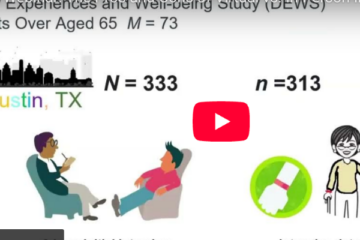
Family Planning and Girls’ Education: Antidotes to Climate Change
Date
July 11, 2017
Author
A few years ago, environmental activist and author Paul Hawken recruited a large team to assess and model practical solutions to climate change, based on available data and research from numerous sources. The results are summarized in Drawdown, a book edited by Hawken that identifies 100 substantive ways for people, governments, and companies to reduce the pace of global warming over the next 30 years.1 “Drawdown” refers to the desired point at which the current buildup of atmospheric carbon is halted.
Hawken’s team ranked solutions by their estimated capacity to stanch the carbon buildup through 2050. And here’s the big news: Increasing girls’ education and increasing access to family planning (FP) ranked six and seven, respectively, on the list (number one is most impactful). The authors noted that these two solutions are so closely linked in a practical sense that they should be considered together, yielding a combined impact that would top the Drawdown climate solution rankings by a wide margin.
Here at PRB, where we have worked hard for many years to communicate the links between family planning, climate change, and environmental resilience, Drawdown proved interesting indeed. PRB’s recent work in this domain includes the 2016 World Population Data Sheet on the theme of “Human Needs, Sustainable Resources,” and an interactive infographic on the relationship between family planning and people’s resilience to natural and other disasters.
How did FP and girls’ education earn such lofty spots on Hawken’s list? Katharine Wilkenson, the senior writer on Drawdown, said the team’s frame of reference was the latest United Nations (UN) global population projections released in 2015 that show a “medium” (most probable) projection of 9.7 billion people in 2050 and a “high” projection of 10.7 billion.
Hawken’s team assumed that facilitating widespread access to FP and keeping girls in school through secondary school could ensure a population closer to the medium projection. The girls’ education link reflects data showing that more schooling correlates to having fewer children and living healthier lives. Wilkenson said research they vetted showed that women with no education averaged four to five more children than women with 12 years of schooling.
“If we end up [in 2050] at the high population variant, that means 1.1 billion more people than the medium. It’s the emissions impact you would have from that [lower population],” said Wilkenson, adding that the Drawdown team did not even consider the UN’s low variant because they wanted to take a conservative approach in their savings estimates. They were also cognizant of the fact that the impact of slowing population growth also depends on where the population growth slows—in a high-income country or a low-income country, for example. However, this was taken in to account in the calculations.
To be sure, this is not the first time someone has tried to quantify the relationship between population trends and climate change. For example, one of the key sources cited by the Drawdown team was a seminal 2010 paper by Brian C. O’Neill et al., that applies the population-environment-technology (PET) simulation model. O’Neill and co-authors concluded that, “slowing population growth could provide 16-29% of the emissions reductions suggested to be necessary by 2050 to avoid dangerous climate change.”
What the Drawdown team has tried to do is put the population factor in a broader context, and provide practical recommendations for leveraging these potential solutions. FP and girls’ education are both in the Women and Girls category of solutions, one of seven that also includes Buildings and Cities, Food, Energy, Land Use, Materials, and Transport. The top solution listed by capacity to reduce atmospheric carbon emissions (if FP and girls’ education are kept separate) is refrigerant management, followed by onshore wind turbines, with reduced food waste coming in third.
The book’s contributors are fully aware that climate change is not going away anytime soon, given the long-term momentum caused by carbon buildup that has taken place to date, primarily in developed countries, and increasingly in middle-income nations. “What we have tried to do is to establish a clear and more compelling goal for humanity—getting to the point where we are moving back to the conditions that are most conductive for life,” said Wilkenson.
“It’s aspirational for sure, but what we see in the work we do is we actually have the technical capacity to get there. We don’t need some geoengineering solution to save the day. We have an incredible toolbox that humanity has already developed, with so many positive ripple effects.”
The book’s rollout happens to coincide with a potentially dramatic policy shift in the United States, as President Donald Trump recently announced his administration’s intention to withdraw from the Paris climate accord. Wilkenson found a silver lining in Trump’s decision in that is has been a huge mobilizer for supporters of climate action. “Trump has galvanized the climate movement. You now see cities, states, and businesses taking leadership rolls. That will flow into making solutions happen,” Wilkenson said.
Reference
1. The full title is “Drawdown The Most Comprehensive Plan Ever Proposed to Reverse Global Warming,” accessed at www.drawdown.org/.





